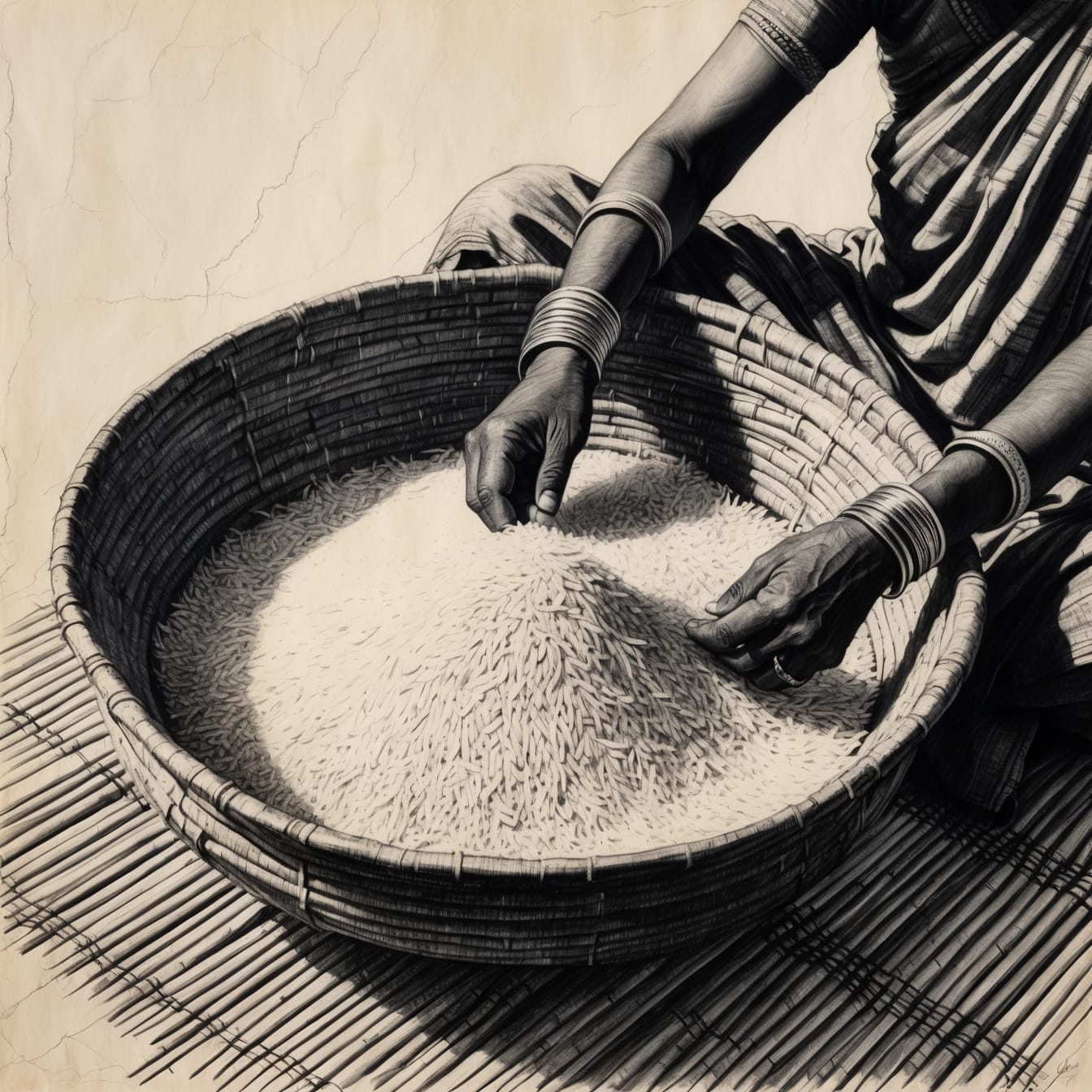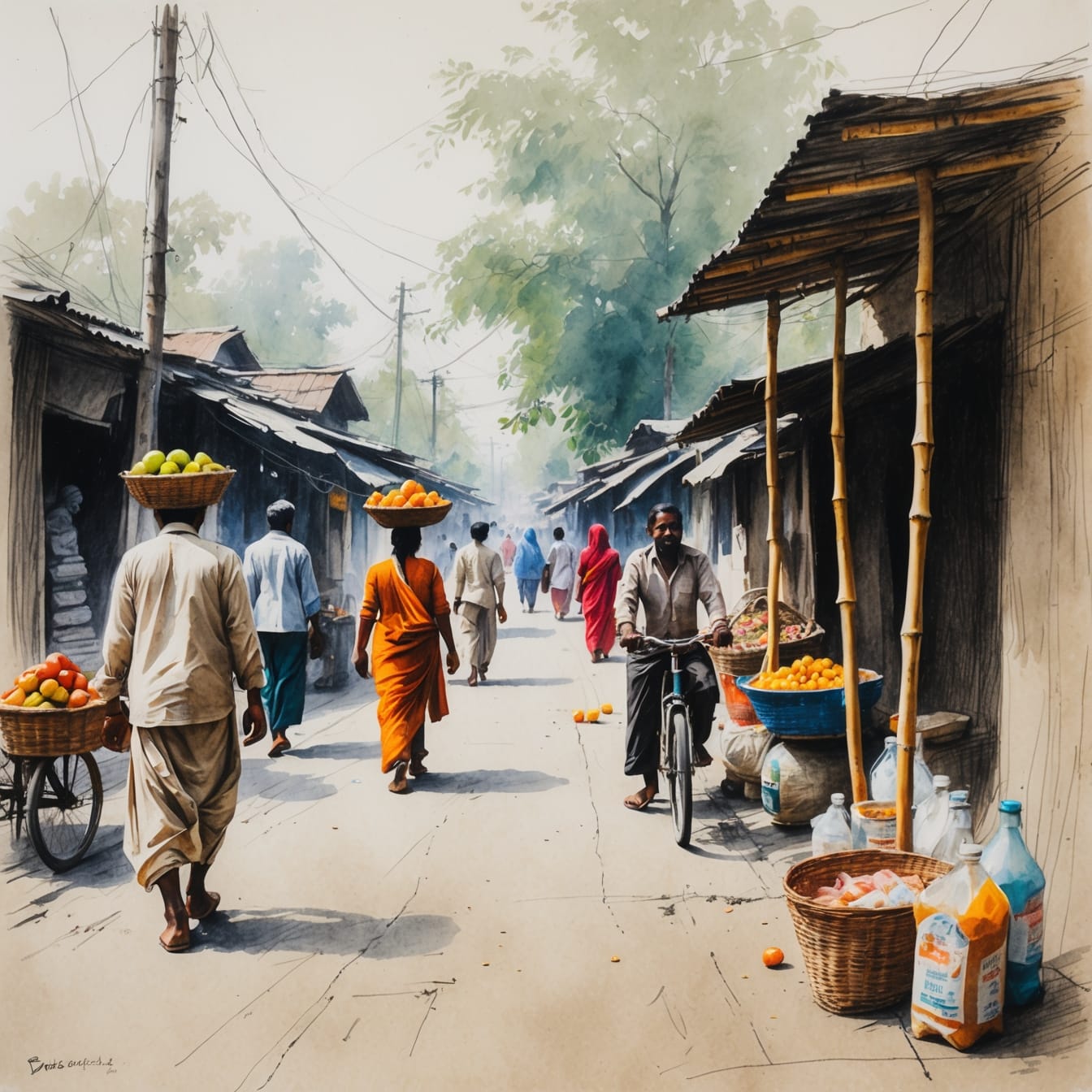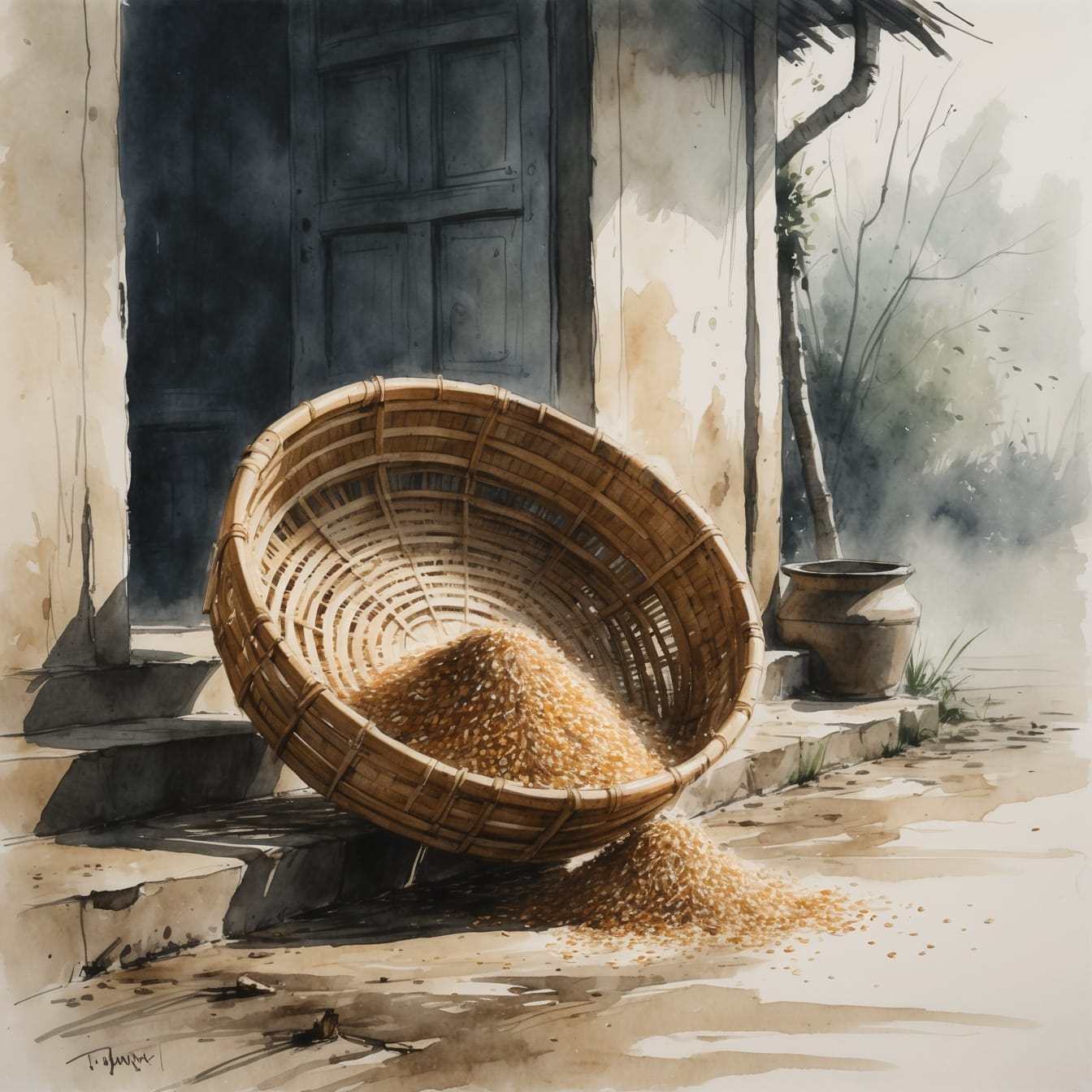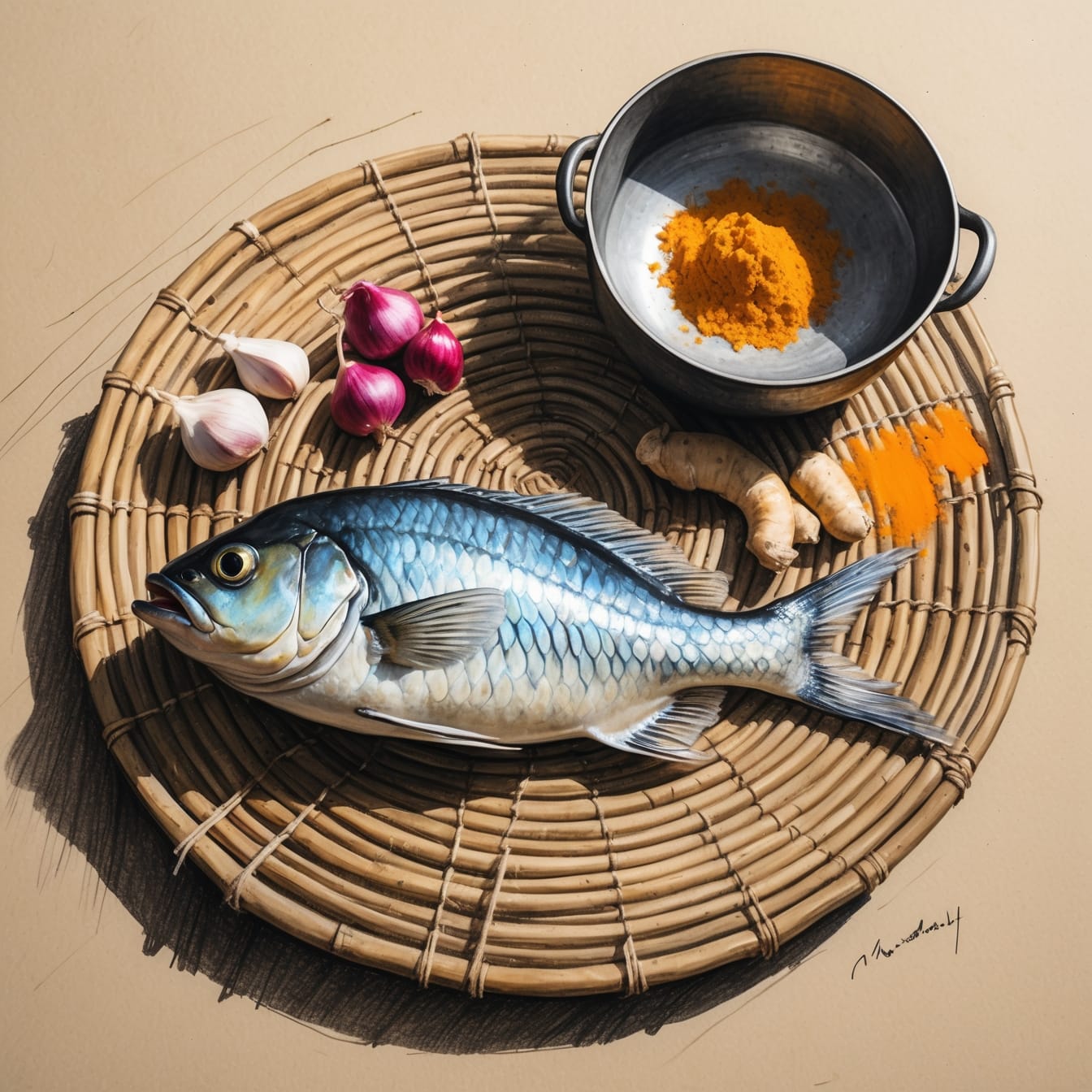The Winnowing Room
The Winnowing Room and the Street of Songs
From the Midnight Folk series — Stories by Candlelight
🍚 The Rice Dance
It began with the winnowing basket --- a flat round tray of woven bamboo, held in the hands of women who knew how to summon rhythm from silence. Back and forth. The rice swirled and rustled like maracas. Sh-sh-sha. Sh-sh-sha. The husks flew, the grains fell, the rhythm held.
🐦 The Street Symphony
Outside the safe, shaded womb of the inner rooms, the street began to sing. The crows took up the chorus: Kaa! Kaa! echoing across rooftops, winged shadows dancing over laundry lines. And then came the madman, faithful as the azan, his chant unwavering: "Dey! Allah Dey!" Give, O God, Give. He marched down the road with conviction as his only clothing, his rhythm as constant as a metronome --- a liturgy of longing. Then came the calls of the merchants, the daily salesmen, singers of wares and witnesses to the hour: "Shishi! Bottle, Hari-Pateel!" "Shobji lo! Faal lo!" "Matir Hori! Plastic Balti!" Voices announcing their presence like birds, names of objects echoing into the air: bottles, pots, old pans, vegetables, jujube fruits, clay pitchers. These weren't just transactions. This was recycling before climate change, reclamation before activism --- done not for the world, but for the family, for the meal, for the month ahead. And so the street sang --- its own ragas and refrains.
🫓 The Hands That Made the Hearth
But within, in the beating heart of the home, was another music: the rhythm of women's hands. Old hands grinding spices on the shil-pata, henna orbs on her palms and her nails stained red with henna and golden with turmeric. Red and yellow — the colour of her sari — the archetypal Bengali sari — yellow with a red paar. Browner-than-earth hands kneading dough, maiden hands folding samosas with practiced grace, a mother's hands cradling hot cups of milk before sunset.


About This Bengali Childhood Memoir: This sensory-rich cultural narrative captures the traditional household sounds and rhythms of Bengali family life, centered around the ancient practice of winnowing rice and the symphony of street vendors' calls in Dhaka, Bangladesh. Set in Haq Villa, this memoir celebrates the domestic wisdom of Bengali women whose hands created daily miracles of sustenance and cultural preservation.
The piece explores how traditional Bengali household practices created their own music - from the rhythmic *sh-sh-sha* of rice in bamboo winnowing baskets to the melodic calls of street merchants selling vegetables, clay pots, and recycled goods. It reveals how these sounds formed the soundtrack of childhood, weaving together women's domestic work, spiritual practice, and community life in ways that practiced sustainability before environmentalism.
This cultural memory memoir resonates with themes of traditional women's work in Bengal, cultural preservation through sensory memory, the wisdom embedded in domestic practices like winnowing rice traditional method, street vendor culture Bangladesh, sustainable living before environmentalism, and the way childhood homes become symphonies of sound and meaning that preserve disappearing ways of life.
The narrative includes authentic Bengali terminology: winnowing basket (woven bamboo), ilish maach (hilsa fish), bonti (traditional cutting knife), bhater maar (rice starch), jali (rattan basket), shil-pata (grinding stone), kacher churi (glass bangles), moshari (mosquito net), and piri (low wooden stool), creating an immersive experience in traditional Bengali household life.
Tags & Keywords: #BengaliChildhoodMemoir #TraditionalHouseholdLife #WinnowingBasketMemories #StreetVendorCallsBangladesh #WomensDomesticWork #CulturalMemoryBengal #SensoryChildhoodMemories #TraditionalBengaliHome #HouseholdRhythmsBangladesh #WomensWorkSongs #StreetSymphonySounds #TraditionalFoodPreparation #CulturalPreservationMemoir #ChildhoodHomeSounds #BengaliFamilyTraditions #DomesticWisdomWomen #TraditionalSustainablePractices #HaqVillaMemories #WinnowingRiceTraditionalMethod #BengaliCuisinePreparation #StreetVendorCalls #TraditionalBengaliHouseholdSounds #CulturalMemoryPreservationThroughSensoryDetails #WomensDomesticWisdomBengal #IlishMaachBengaliFish #BontiTraditionalCuttingTool #BhaterMaarRiceStarch #MoshariMosquitoNet #ShilPataGrindingStone #KacherChuriBangles
Share Your Memories
Do you have similar sensory memories of childhood homes? Share the sounds, smells, and rhythms that made your childhood spaces feel like symphonies.
Comments loading...